- Home
- Bill Bryson
Shakespeare: The World as Stage Page 2
Shakespeare: The World as Stage Read online
Page 2
Their conviction was that Shakespeare, as an active citizen, was bound to turn up in the public records from time to time. The theory was sound enough, but when you consider that there were hundreds of thousands of records, without indexes or cross-references, each potentially involving any of two hundred thousand citizens; that Shakespeare’s name, if it appeared at all, might be spelled in some eighty different ways, or be blotted or abbreviated beyond recognition; and that there was no reason to suppose that he had been involved in London in any of the things-arrest, marriage, legal disputes, and the like-that got one into the public records in the first place, the Wallaces’ devotion was truly extraordinary.
So we may imagine a muffled cry of joy when in 1909 they came across a litigation roll from the Court of Requests in London comprising twenty-six assorted documents that together make up what is known as the Belott-Mountjoy (or Mountjoie) Case. All relate to a dispute in 1612 between Christopher Mountjoy, a refugee Huguenot wigmaker, and his son-in-law, Stephen Belott, over a marriage settlement. Essentially Belott felt that his father-in-law had not given him all that he had promised, and so he took the older man to court.
Shakespeare, it appears, was caught up in the affair because he had been a lodger in Mountjoy’s house in Cripplegate in 1604 when the dispute arose. By the time he was called upon to give testimony eight years later, he claimed-not unreasonably-to be unable to remember anything of consequence about what had been agreed upon between his landlord and the landlord’s son-in-law.
The case provided no fewer than twenty-four new mentions of Shakespeare and one precious additional signature-the sixth and so far last one found. Moreover it is also the best and most natural of his surviving signatures. This was the one known occasion when Shakespeare had both space on the page for a normal autograph and a healthily steady hand with which to write it. Even so, as was his custom, he writes the name in an abbreviated form: “Wllm Shaksp.” It also has a large blot on the end of the surname, probably because of the comparatively low quality of the paper. Though it is only a deposition, it is also the only document in existence containing a transcript of Shakespeare speaking in his own voice.
The Wallaces’ find, reported the following year in the pages of the University of Nebraska Studies (and forever likely to remain, we may suppose, that journal’s greatest scoop), was important for two other reasons. It tells us where Shakespeare was living at an important point in his career: in a house on the corner of Silver and Monkswell streets near Saint Aldermanbury in the City of London. And the date of Shakespeare’s deposition, May 11, 1612, provides one of the remarkably few days in his life when we can say with complete certainty where he was.
The Belott-Mountjoy papers were only part of what the Wallaces found in their years of searching. It is from their work that we know the extent of Shakespeare’s financial interests in the Globe and Blackfriars theaters, and of his purchase of a gatehouse at Blackfriars in 1613, just three years before his death. They found a lawsuit in which the daughter of John Heminges, one of Shakespeare’s closest colleagues, sued her father over some family property in 1615. For Shakespeare scholars these are moments of monumental significance.
Unfortunately, as time passed Charles Wallace began to grow a little strange. He penned extravagant public tributes to himself in the third person (“Prior to his researches,” read one, “it was believed and taught for nearly 50 years that everything was known about Shakespeare that ever would be known. His remarkable discoveries have changed all this…and brought lasting honor to American scholarship”) and developed paranoid convictions. He became convinced that other researchers were bribing the desk clerks at the Public Record Office to learn which files he had ordered. Eventually he believed that the British government was secretly employing large numbers of students to uncover Shakespeare records before he could get to them, and claimed as much in an American literary magazine, causing dismay and unhappiness on both sides of the Atlantic.
Short of funds and increasingly disowned by the academic community, he and Hulda gave up on Shakespeare and the English, and moved back to the United States. It was the height of the oil boom in Texas, and Wallace developed another unexpected conviction: He decided that he could recognize good oil land just by looking at it. Following a secret instinct, he sank all his remaining funds in a 160-acre farm in Wichita Falls, Texas. It proved to be one of the most productive oil fields ever found anywhere. He died in 1932, immensely rich and not very happy.
With so little to go on in the way of hard facts, students of Shakespeare’s life are left with essentially three possibilities: to pick minutely over legal documents as the Wallaces did; to speculate (“every Shakespeare biography is 5 percent fact and 95 percent conjecture,” one Shakespeare scholar told me, possibly in jest); or to persuade themselves that they know more than they actually do. Even the most careful biographers sometimes take a supposition-that Shakespeare was Catholic or happily married or fond of the countryside or kindly disposed toward animals-and convert it within a page or two to something like a certainty. The urge to switch from subjunctive to indicative is, to paraphrase Alastair Fowler, always a powerful one.
Others have simply surrendered themselves to their imaginations. One respected and normally levelheaded academic of the 1930s, the University of London’s Caroline F. E. Spurgeon, became persuaded that it was possible to determine Shakespeare’s appearance from a careful reading of his text, and confidently announced (in Shakespeare’s Imagery and What It Tells Us) that he was “a compactly well-built man, probably on the slight side, extraordinarily well-coordinated, lithe and nimble of body, quick and accurate of eye, delighting in swift muscular movement. I suggest that he was probably fair-skinned and of a fresh colour, which in youth came and went easily, revealing his feelings and emotions.”
Ivor Brown, a popular historian, meanwhile concluded from mentions of abscesses and other eruptions in Shakespeare’s plays that Shakespeare sometime after 1600 had undergone “a severe attack of staphylococcic infection” and was thereafter “plagued with recurrent boils.”
Other, literal-minded readers of Shakespeare’s sonnets have been struck by two references to lameness, specifically in Sonnet 37:
As a decrepit father takes delight
To see his active child do deeds of youth,
So I, made lame by Fortune’s dearest spite,
Take all my comfort of thy worth and truth.
And again in Sonnet 89:
Say that thou didst forsake me for some fault,
And I will comment upon that offense.
Speak of my lameness, and I straight will halt.
and concluded that he was crippled.
In fact it cannot be emphasized too strenuously that there is nothing-not a scrap, not a mote-that gives any certain insight into Shakespeare’s feelings or beliefs as a private person. We can know only what came out of his work, never what went into it.
David Thomas is not in the least surprised that he is such a murky figure. “The documentation for William Shakespeare is exactly what you would expect of a person of his position from that time,” he says. “It seems like a dearth only because we are so intensely interested in him. In fact we know more about Shakespeare than about almost any other dramatist of his age.”
Huge gaps exist for nearly all figures from the period. Thomas Dekker was one of the leading playwrights of the day, but we know little of his life other than that he was born in London, wrote prolifically, and was often in debt. Ben Jonson was more famous still, but many of the most salient details of his life-the year and place of his birth, the identities of his parents, the number of his children-remain unknown or uncertain. Of Inigo Jones, the great architect and theatrical designer, we have not one certain fact of any type for the first thirty years of his life other than that he most assuredly existed somewhere.
Facts are surprisingly delible things, and in four hundred years a lot of them simply fade away. One of the most popular plays of the age wa
s Arden of Faversham, but no one now knows who wrote it. When an author’s identity is known, that knowledge is often marvelously fortuitous. Thomas Kyd wrote the most successful play of its day, The Spanish Tragedy, but we know this only because of a passing reference to his authorship in a document written some twenty years after his death (and then lost for nearly two hundred years).
What we do have for Shakespeare are his plays-all of them but one or two-thanks in very large part to the efforts of his colleagues Henry Condell and John Heminges, who put together a more or less complete volume of his work after his death-the justly revered First Folio. It cannot be overemphasized how fortunate we are to have so many of Shakespeare’s works, for the usual condition of sixteenth-and early seventeenth-century plays is to be lost. Few manuscripts from any playwrights survive, and even printed plays are far more often missing than not. Of the approximately three thousand plays thought to have been staged in London from about the time of Shakespeare’s birth to the closure of the theaters by the Puritans in a coup of joylessness in 1642, 80 percent are known only by title. Only 230 or so play texts still exist from Shakespeare’s time, including the thirty-eight by Shakespeare himself-about 15 percent of the total, a gloriously staggering proportion.
It is because we have so much of Shakespeare’s work that we can appreciate how little we know of him as a person. If we had only his comedies, we would think him a frothy soul. If we had just the sonnets, he would be a man of darkest passions. From a selection of his other works, we might think him variously courtly, cerebral, metaphysical, melancholic, Machiavellian, neurotic, lighthearted, loving, and much more. Shakespeare was of course all these things-as a writer. We hardly know what he was as a person.
Faced with a wealth of text but a poverty of context, scholars have focused obsessively on what they can know. They have counted every word he wrote, logged every dib and jot. They can tell us (and have done so) that Shakespeare’s works contain 138,198 commas, 26,794 colons, and 15,785 question marks; that ears are spoken of 401 times in his plays; that dunghill is used 10 times and dullard twice; that his characters refer to love 2,259 times but to hate just 183 times; that he used damned 105 times and bloody 226 times, but bloody-minded only twice; that he wrote hath 2,069 times but has just 409 times; that all together he left us 884,647 words, made up of 31,959 speeches, spread over 118,406 lines.
They can tell us not only what Shakespeare wrote but what he read. Geoffrey Bullough devoted a lifetime, nearly, to tracking down all possible sources for virtually everything mentioned in Shakespeare, producing eight volumes of devoted exposition revealing not only what Shakespeare knew but precisely how he knew it. Another scholar, Charlton Hinman, managed to identify individual compositors who worked on the typesetting of Shakespeare’s plays. By comparing preferences of spelling-whether a given compositor used go or goe, chok’d or choakte, lantern or lanthorn, set or sett or sette, and so on-and comparing these in turn with idiosyncrasies of punctuation, capitalization, line justification, and the like, he and others have identified nine hands at work on the First Folio. It has been suggested, quite seriously, that thanks to Hinman’s detective work we know more about who did what in Isaac Jaggard’s London workshop than Jaggard did himself.
Shakespeare, it seems, is not so much a historical figure as an academic obsession. A glance through the indexes of the many scholarly journals devoted to him and his age reveals such dogged investigations as “Linguistic and Informational Entropy in Othello,” “Ear Disease and Murder in Hamlet,” “Poisson Distributions in Shakespeare’s Sonnets,” “Shakespeare and the Quebec Nation,” “Was Hamlet a Man or a Woman?” and others of similarly inventive cast.
The amount of Shakespearean ink, grossly measured, is almost ludicrous. In the British Library catalog, enter “Shakespeare” as author and you get 13,858 options (as opposed to 455 for “Marlowe,” for instance), and as subject you get 16,092 more. The Library of Congress in Washington, D.C., contains about seven thousand works on Shakespeare-twenty years’ worth of reading if read at the rate of one a day-and, as this volume slimly attests, the number keeps growing. Shakespeare Quarterly, the most exhaustive of bibliographers, logs about four thousand serious new works-books, monographs, other studies-every year.
To answer the obvious question, this book was written not so much because the world needs another book on Shakespeare as because this series does. The idea is a simple one: to see how much of Shakespeare we can know, really know, from the record.
Which is one reason, of course, it’s so slender.
Chapter Two. The Early Years, 1564-1585
WILLIAM SHAKESPEARE WAS BORN into a world that was short of people and struggled to keep those it had. In 1564 England had a population of between three million and five million-much less than three hundred years earlier, when plague began to take a continuous, heavy toll. Now the number of living Britons was actually in retreat. The previous decade had seen a fall in population nationally of about 6 percent. In London as many as a quarter of the citizenry may have perished.
But plague was only the beginning of England ’s deathly woes. The embattled populace also faced constant danger from tuberculosis, measles, rickets, scurvy, two types of smallpox (confluent and hemorrhagic), scrofula, dysentery, and a vast, amorphous array of fluxes and fevers-tertian fever, quartian fever, puerperal fever, ship’s fever, quotidian fever, spotted fever-as well as “frenzies,” “foul evils,” and other peculiar maladies of vague and numerous type. These were, of course, no respecters of rank. Queen Elizabeth herself was nearly carried off by smallpox in 1562, two years before William Shakespeare was born.
Even comparatively minor conditions-a kidney stone, an infected wound, a difficult childbirth-could quickly turn lethal. Almost as dangerous as the ailments were the treatments meted out. Victims were purged with gusto and bled till they fainted-hardly the sort of handling that would help a weakened constitution. In such an age it was a rare child that knew all four of its grandparents.
Many of the exotic-sounding diseases of Shakespeare’s time are known to us by other names (their ship’s fever is our typhus, for instance), but some were mysteriously specific to the age. One such was the “English sweat,” which had only recently abated after several murderous outbreaks. It was called “the scourge without dread” because it was so startlingly swift: Victims often sickened and died on the same day. Fortunately many survived, and gradually the population acquired a collective immunity that drove the disease to extinction by the 1550s. Leprosy, one of the great dreads of the Middle Ages, had likewise mercifully abated in recent years, never to return with vigor. But no sooner had these perils vanished than another virulent fever, called “the new sickness,” swept through the country, killing tens of thousands in a series of outbreaks between 1556 and 1559. Worse, these coincided with calamitous, starving harvests in 1555 and 1556. It was a literally dreadful age.
Plague, however, remained the darkest scourge. Just under three months after William’s birth, the burials section of the parish register of Holy Trinity Church in Stratford bears the ominous words Hic incepit pestis (Here begins plague), beside the name of a boy named Oliver Gunne. The outbreak of 1564 was a vicious one. At least two hundred people died in Stratford, about ten times the normal rate. Even in nonplague years 16 percent of infants perished in England; in this year nearly two-thirds did. (One neighbor of the Shakespeare’s lost four children.) In a sense William Shakespeare’s greatest achievement in life wasn’t writing Hamlet or the sonnets but just surviving his first year.
We don’t know quite when he was born. Much ingenuity has been expended on deducing from one or two certainties and some slender probabilities the date on which he came into the world. By tradition it is agreed to be April 23, Saint George’s Day. This is the national day of England, and coincidentally also the date on which Shakespeare died fifty-two years later, giving it a certain irresistible symmetry, but the only actual fact we have concerning the period of his birth is that he
was baptized on April 26. The convention of the time-a consequence of the high rates of mortality-was to baptize children swiftly, no later than the first Sunday or holy day following birth, unless there was a compelling reason to delay. If Shakespeare was born on April 23-a Sunday in 1564-then the obvious choice for christening would have been two days later on Saint Mark’s Day, April 25. However, some people thought Saint Mark’s Day was unlucky and so, it is argued-perhaps just a touch hopefully-that the christening was postponed an additional day, to April 26.
We are lucky to know as much as we do. Shakespeare was born just at the time when records were first kept with some fidelity. Although all parishes in England had been ordered more than a quarter of a century earlier, in 1538, to maintain registers of births, deaths, and weddings, not all complied. (Many suspected that the state’s sudden interest in information gathering was a prelude to some unwelcome new tax.) Stratford didn’t begin keeping records until as late as 1558-in time to include Will, but not Anne Hathaway, his older-by-eight-years wife.
One consideration makes arguments about birth dates rather academic anyway. Shakespeare was born under the old Julian calendar, not the Gregorian, which wasn’t created until 1582, when Shakespeare was already old enough to marry. In consequence, what was April 23 to Shakespeare would to us today be May 3. Because the Gregorian calendar was of foreign design and commemorated a pope (Gregory XIII), it was rejected in Britain until 1751, so for most of Shakespeare’s life, and 135 years beyond, dates in Britain and the rest of Europe were considerably at variance-a matter that has bedeviled historians ever since.

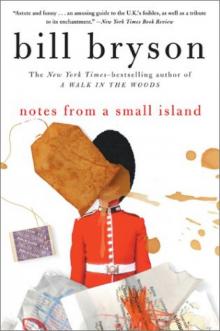 Notes from a Small Island
Notes from a Small Island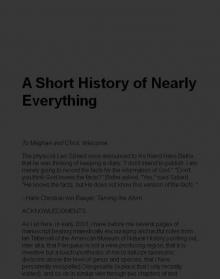 A Short History of Nearly Everything
A Short History of Nearly Everything A Walk in the Woods
A Walk in the Woods I'm a Stranger Here Myself
I'm a Stranger Here Myself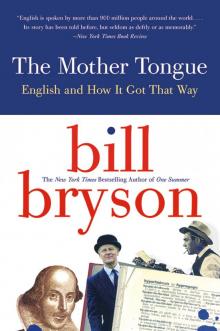 The Mother Tongue
The Mother Tongue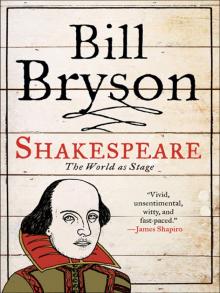 Shakespeare
Shakespeare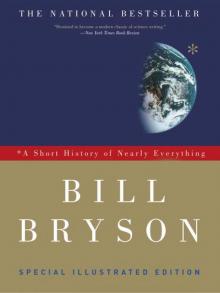 A Short History of Nearly Everything: Special Illustrated Edition
A Short History of Nearly Everything: Special Illustrated Edition The Best American Travel Writing 2016
The Best American Travel Writing 2016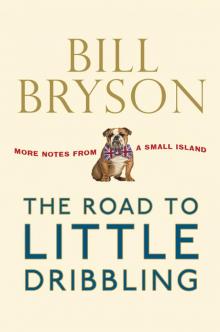 The Road to Little Dribbling
The Road to Little Dribbling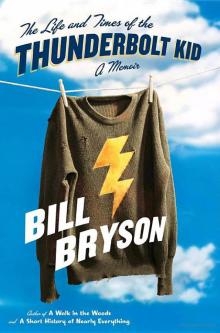 The Life And Times Of The Thunderbolt Kid: A Memoir (v5.0)
The Life And Times Of The Thunderbolt Kid: A Memoir (v5.0)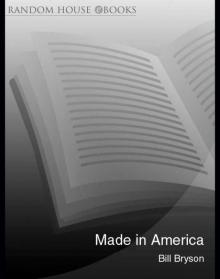 Made In America
Made In America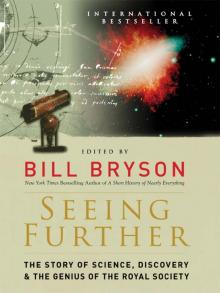 Seeing Further
Seeing Further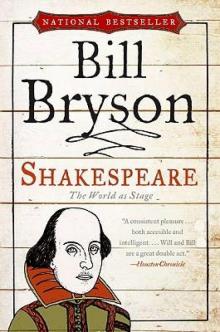 Shakespeare: The World as Stage
Shakespeare: The World as Stage The Life and Times of the Thunderbolt Kid
The Life and Times of the Thunderbolt Kid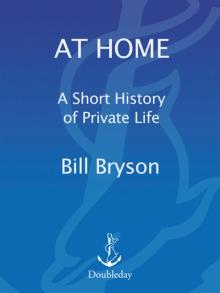 At Home
At Home Bryson's Dictionary For Writers And Editors (v5.0)
Bryson's Dictionary For Writers And Editors (v5.0) Neither Here Nor There
Neither Here Nor There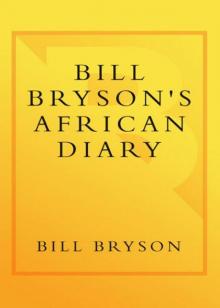 Bill Bryson's African Diary
Bill Bryson's African Diary